Clinton’s Man Problem? Not So Much.
 In April 2015, the Barbara Lee Family Foundation (BLFF) and the Center for American Women and Politics (CAWP) launched Presidential Gender Watch 2016, a project to track, analyze, and illuminate gender dynamics in the 2016 presidential election. With the help of expert scholars and practitioners, Presidential Gender Watch worked for 21 months to further public understanding of how gender influences candidate strategy, voter engagement and expectations, media coverage, and electoral outcomes in campaigns for the nation’s highest executive office. The blog below was written for Presidential Gender Watch 2016, as part of our collective effort to raise questions, suggest answers, and complicate popular discussions about gender’s role in the presidential race.
In April 2015, the Barbara Lee Family Foundation (BLFF) and the Center for American Women and Politics (CAWP) launched Presidential Gender Watch 2016, a project to track, analyze, and illuminate gender dynamics in the 2016 presidential election. With the help of expert scholars and practitioners, Presidential Gender Watch worked for 21 months to further public understanding of how gender influences candidate strategy, voter engagement and expectations, media coverage, and electoral outcomes in campaigns for the nation’s highest executive office. The blog below was written for Presidential Gender Watch 2016, as part of our collective effort to raise questions, suggest answers, and complicate popular discussions about gender’s role in the presidential race.
In the 2016 race, just as coverage has asked about Clinton’s “woman bump,” conversations have already begun about her “man problem.” Much of this coverage raises questions about whether women are any more likely or men less likely to vote for a woman candidate due to her gender. Research proves that candidate gender is not a primary indicator of voting behavior, as party trumps gender in vote choice. Still, some commentators have looked at Clinton’s dearth of support among male voters in recent general election polls to claim a woman nominee might face a higher hurdle with men at the ballot box.
For example, in a May CNN poll, Clinton led Trump by 26 points among women voters, but tied Trump among men. Last week, Public Policy Polling reported Trump was up by four points among men against Clinton, while her 14-point advantage among women voters contributed to her overall lead in a general election match-up.
While Clinton fares worse with men than women in these early polls, they do not indicate a man problem any worse than those of the male Democratic nominees who have run over the past three decades. Instead, they are consistent with gender differences we’ve since in presidential elections since 1980. Gender gaps between 4 and 11 points have been present in presidential contests from 1980 to 2012, wherein Democratic winners won greater support among women than men and Republican winners won greater support among men than women. Why? Because men are more likely than women to identify as Republicans, and women are more likely than men to identify as Democrats.
No Democratic candidate since 1980 has won the majority of men’s votes, with Barack Obama coming closest in 2008 with 49% of men’s support. In 2012, he won his re-election with 45% of men’s votes. If Hillary Clinton has a man problem, it should be considered in light of this precedent. The tables below shed some light on how today’s presumptive nominees are faring among men and women in comparison to their party predecessors.
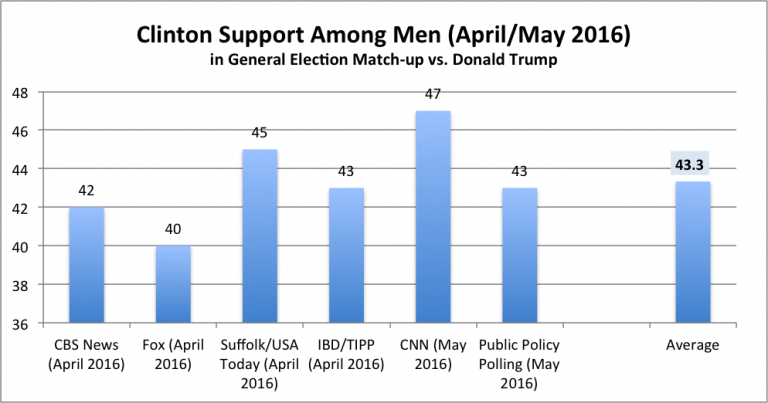
In the most recent general election polls (from April and May 2016), Clinton’s support among men averages 43.3%, within two points of the proportion of Obama’s 2012 male vote (45%) and just over one point below the average proportion of men’s votes earned by all Democratic presidents in the past 26 years (44.5%).
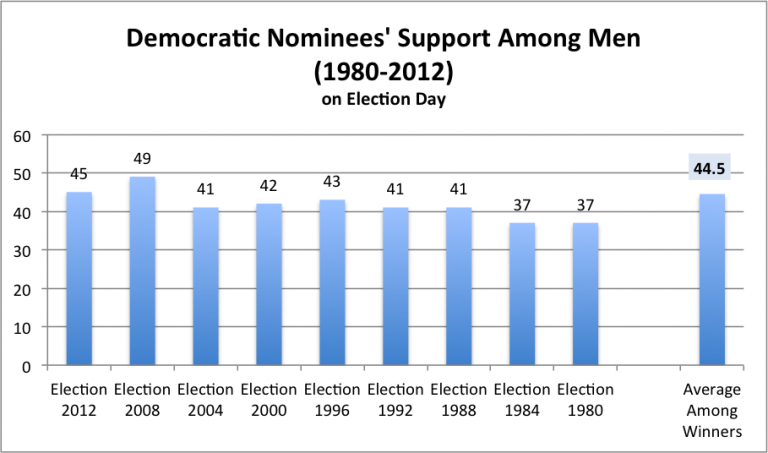
Looking at Obama’s support against Romney in general election polls in April and May of 2012, Obama averaged 45.1% of men’s support, compared to Clinton’s current 43.3%. The man problem faced by Democrats, then, is persistent, and not unique to Clinton’s 2016 candidacy.
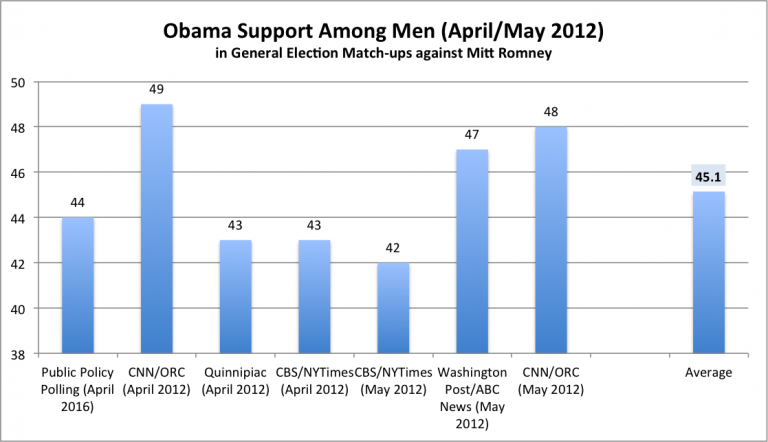
Republican candidates have fared better among men, and Trump is no different. Trump’s average support among men in recent polls is nearly identical to Romney’s support at this point in the 2012 campaign; just over 47% of male voters polled choose the presumptive Republican nominees.
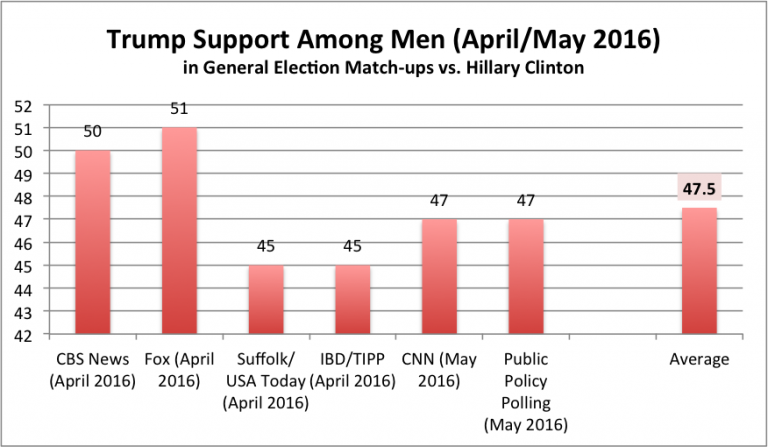
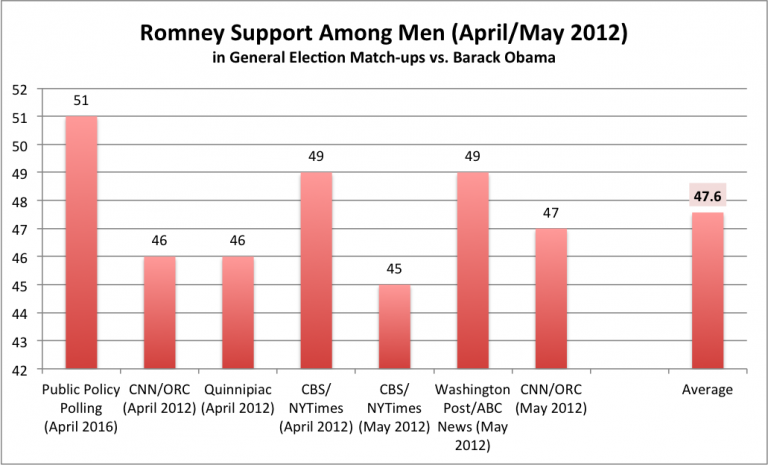
However, Romney earned 52% of men’s votes on Election Day. The average proportion of men’s votes earned by Republican winners since 1980 is 56.2%, nearly ten points higher than Trump’s current level of male support. If Trump wants to match the support of previous Republican nominees, he will have to significantly expand his support among men before November.
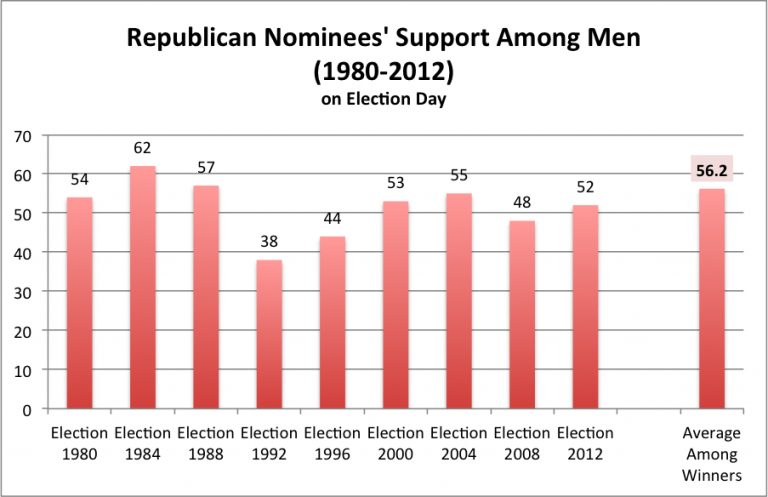
Trump’s advantage among men will matter even more if he continues to underperform among women voters in comparison to previous Republican presidential nominees. Trump’s support among women in recent polls (34%) is significantly lower, on average, than that for any Republican presidential nominee since 1980.
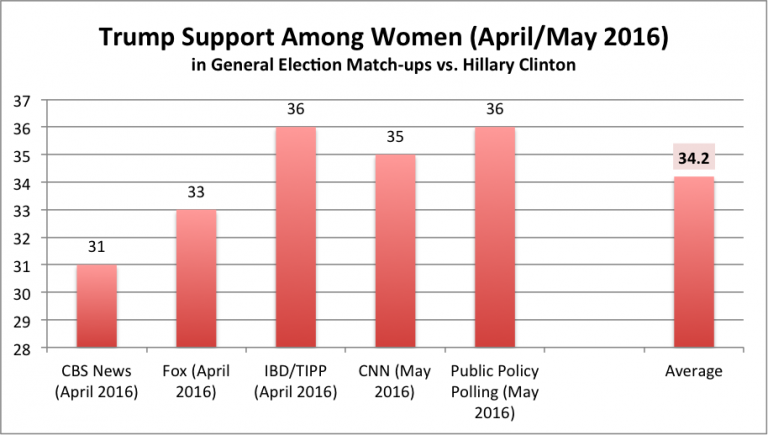
No Republican candidate since then has made it to the Oval Office with less than 43% of women’s votes on Election Day; their average support among women voters is 49%. These data indicate that Trump’s “woman problem” is more significant than any problem Clinton faces among men, and addressing it matters even more because women voters have turned out at higher rates than men in every presidential election since 1980.
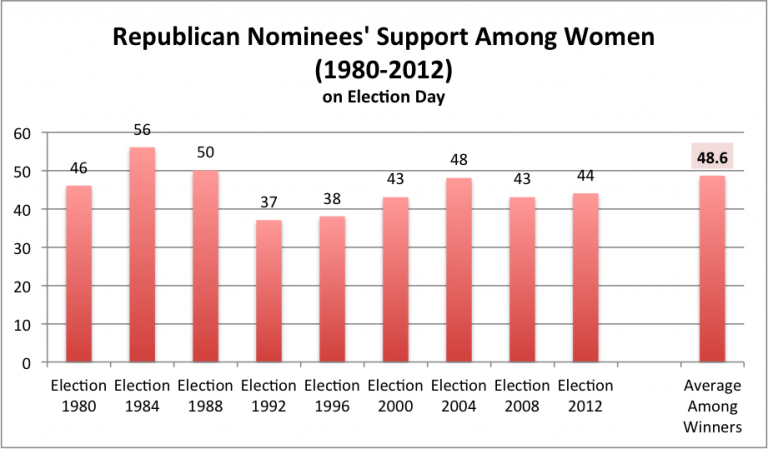
At this point in 2012, Mitt Romney averaged about 43% support among women voters. On Election Day, 2012 Romney lost the presidential election with 44% of women’s votes. Even if he expands his support among men, Trump will have to win at least a similar proportion of women’s support in 2016 to be competitive.
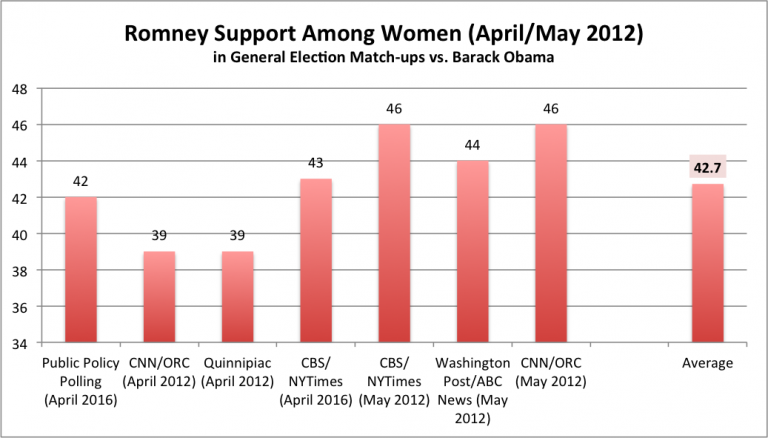
While Trump is underperforming among women voters, Clinton’s average support among women in recent polls (55%) matches Obama’s proportion of women’s votes on Election Day 2012.
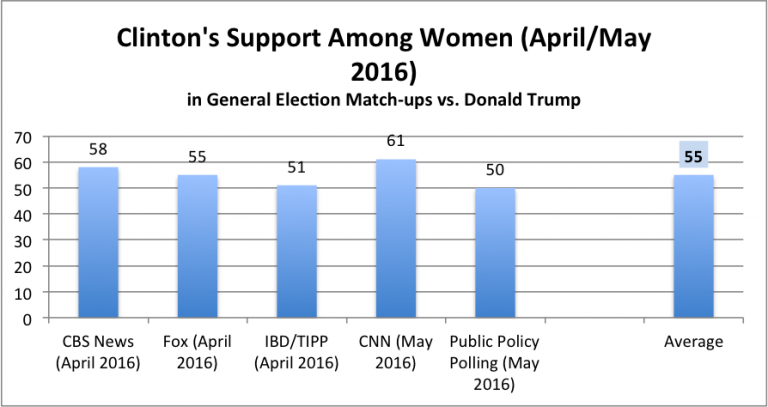
Her strength among women voters is greater now than was Obama’s support among women in the spring of 2012, when he averaged about 50% of women’s votes in general election polls against Romney.
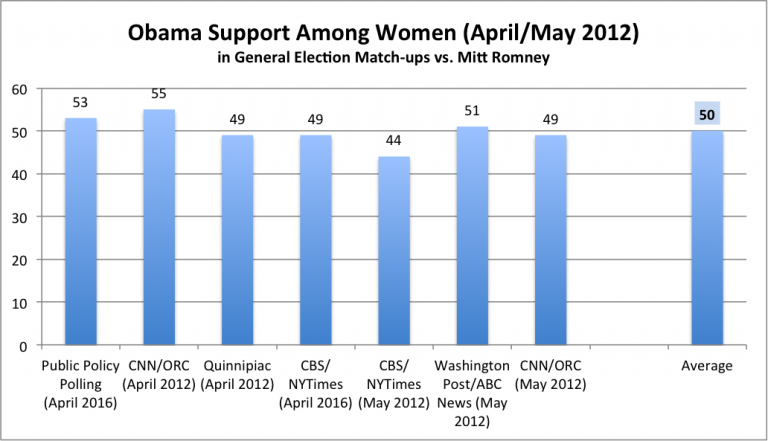
Finally, she is outpacing the average proportion of women’s votes earned by Democratic winners since 1980 (52.5%) by about 2.5 percentage points.
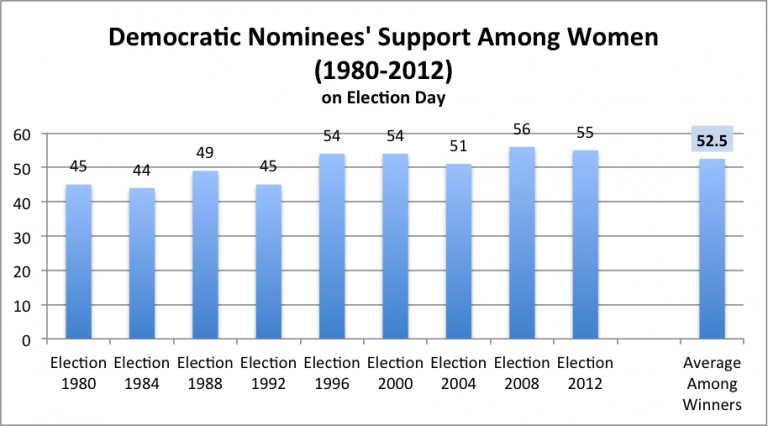
Current general election polls must be viewed with much caution, as campaign dynamics will shift significantly before November. However, as Clinton and Trump move closer to securing their parties’ nominations, it is important that we consider gender differences in general election polls as indicators of party precedent instead of assuming bias or bumps based on gender affinity between candidates and voters.


